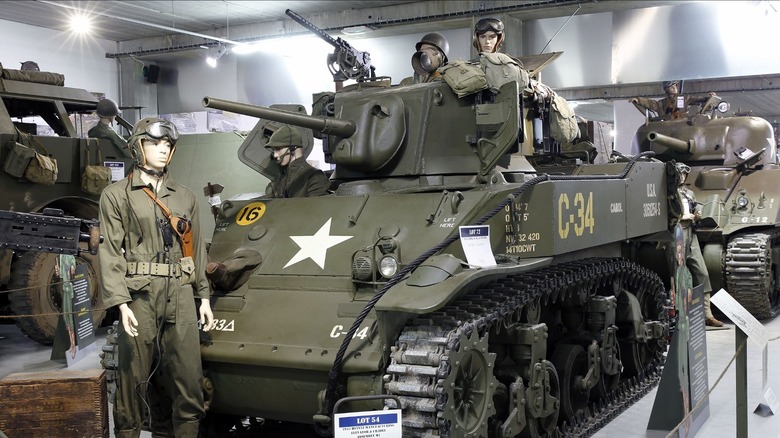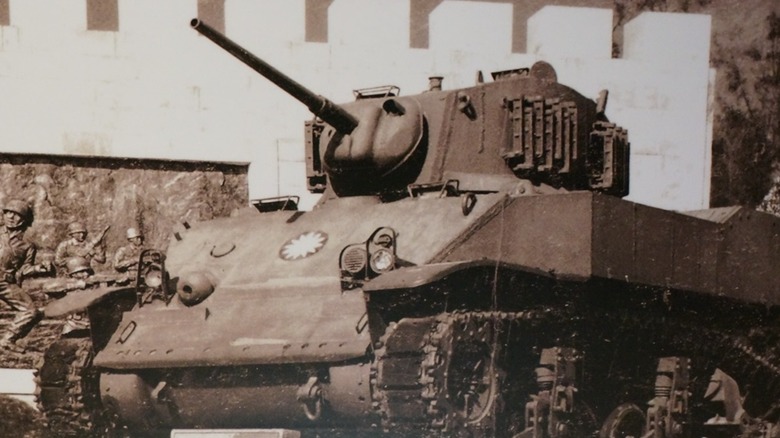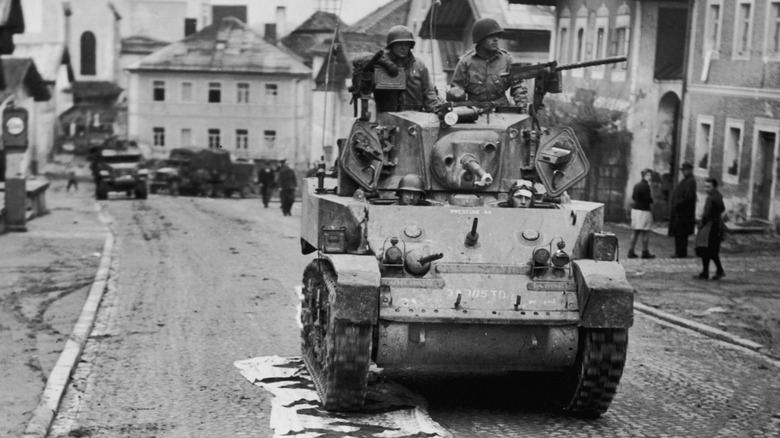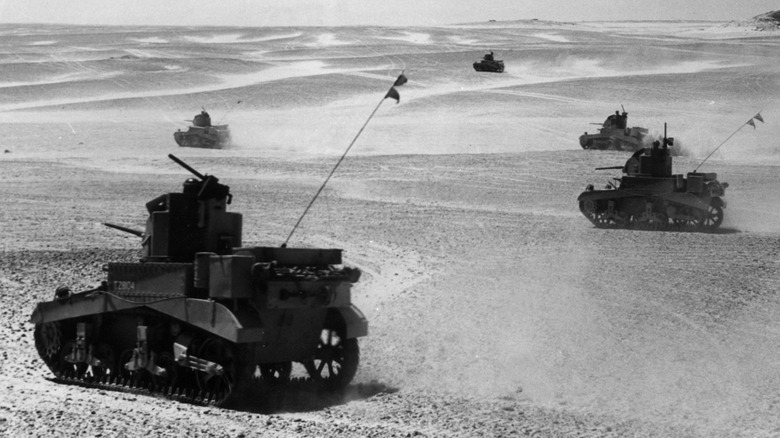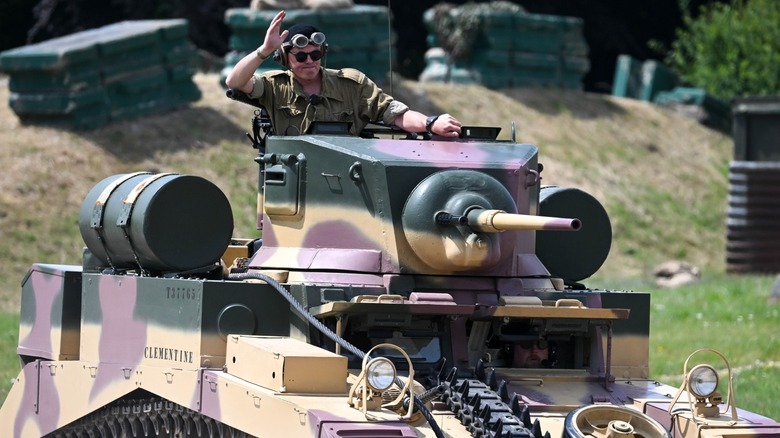The Biggest Differences Between The M3 & M5 Stuart Tanks
At the onset of World War II, the U.S. had no modern tanks equal to those used by the German military. Therefore, as an upgrade of the M2 Light Tank, the U.S. built the M3 Stuart in 1941, forming part of the independent U.S. armored force doctrine. The upgraded M3 Stuart was powered by a radial Continental engine — the same used in many active airplane models, making it in high demand.
The following year, influenced by an expected shortage of these engines, the M3 Stuart was developed into the M5 Stuart. The latter model also included several improvements that turned it into the iconic light tank we know today, serving in various military units decades after the U.S. Army retired it.
While the two light tanks looked similar, especially from afar, the M5 Stuart had enough changes to make it distinct from the older M3. These are the biggest differences between the two.
A sloped front armor
The most obvious change is the M5 Stuart's use of more steeply sloped frontal armor. The M3 Stuart, from the base variant up to the M3A1 model, only had armor at an angle of 17 degrees. It's a significant change, as angled armor allows enemy shots to bounce off, increasing protection, without adding weight to the vehicle.
The new tank model's sloped armor at the front, increased the angle from 17 degrees to 48. Although this may seem like a simple modification, it had a profound impact on the tank's design as it gave better protection to the front of the tank and gave the driver and assistant driver more space. Furthermore, the M5's sloped glacis meant that the driver and co-driver no longer had viewing doors that they could open to see clearly when not in battle. However, they could raise their seats instead, to see outside their hatches while still operating the tank.
[ Featured image by Panzer VI-II via Wikimedia Commons | Cropped and scaled | CC BY-SA 3.0 ]
The fully welded hull
All M3 Stuart Tank variants used a combination of riveted and welded armor for protection. This was due to their rolled face-hardened steel that tended to crack during the welding process, then requiring riveting for the installation. The only exception was the final version, the M3A3 tank, which was fully welded using rolled homogenous steel. The production method continued with the M5 Stuart, making the newer model's armor easier and cheaper to produce, and therefore more suitable for the mass production required of the tank during war-time conditions.
You can see the difference between these types of armor when you look at photos of the M3 and M5 Stuart tanks. The old Stuart light tanks that used riveted and welded armor typically had rivets protruding from the front armor. On the other hand, the newer M5 models had a smooth front face, no longer needing rivets to hold the armor.
From one radial to twin V8 engines
As discussed, a primary reason for the M5 Stuart upgrade was the scarcity of the Continental W-670 radial engine, the base of the Continental R-670 engine used in various airplanes including the PT-17 Stearman – a U.S. military training aircraft.
Therefore, to help production continue during the war, the M5 Stuart used two Cadillac V8s instead. Each engine had its own transmission, with their outputs converging in the front-mounted transfer unit. This gave the new light tank 296 hp at 3,200 rpm and 560 ft-lb of torque at 1,200 rpm. It had a top road speed of 36 mph.
Considering the sloped frontal armor and fully welded hull using rolled homogenous steel, the late model M3, the M3A3 tank, naturally shared many characteristics with the M5 Stuart it preceded. The primary difference between them is the area behind the turret. The placement of the twin V8's engine radiators required a raised rear hull, which you'll see on every M5 variant, compared to all M3 tanks, which had a flat rear engine deck.
The escape hatch
All versions of the M3 tank, except for the M3A3, had one hatch for the driver and another in the turret for everyone else. From the M3A3 model onwards, both driver and assistant driver had their own hatches, giving the tank a total of three standard access points.
However, the M5 gets another hatch that you will only see if you crawl under the tank or look in the crew compartment — the escape hatch. This hatch is located on the floor behind the assistant driver's seat. It allowed the crew to escape if the M5 Stuart was disabled and pinned down — all they had to do was open the escape hatch and crawl out from under the tank. The hatch used the tank to shield the crew from small arms fire as they crawled out to escape.
The M3 Stuart Tank was still in active duty 70 years after it launched. Nevertheless, the changes that were made turned it into the iconic M5 Stuart that influenced other light tanks that superseded it, such as the French AMX-13 or the Soviet T-70.
